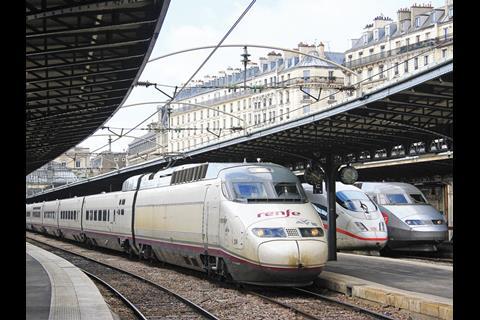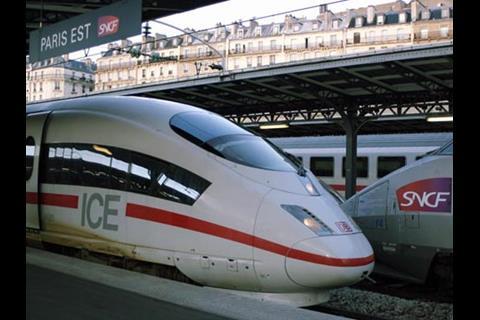EUROPE: An outline of the technical requirements needed to support 'a successful railway of the future' was published on February 11 by the 'Railway Operating Community', which brings together those European train operators and infrastructure managers who are members of CER, EIM and UIC.
Co-ordinated by UIC, the Rail Technical Strategy Europe is intended to complement the Challenge 2050 vision document prepared by the ROC members in 2013. Although it is 'not a research agenda', it is intended to sit alongside the Shift2Rail research initiative in helping to shape the evolution of Europe's railways.
Challenge 2050 addressed the issues facing Europe's railways from the perspective of stakeholders, passengers, freight shippers and suppliers, with the key challenges grouped under three main pillars: policy, technical and services. RTSE in turn addresses the technical requirements which 'will enable the sector to exploit its opportunities to satisfy customer requirements'.
The strategy emphasises that 'rail is first and foremost a system', which 'must be designed, constructed, operated and maintained holistically', while 'taking account of the interfaces between its constituent parts, some of which are safety critical, and upon which the integrity of the system depends.'
Adding that 'this system approach requires co-ordinated planning and operation, with collaborative and aligned asset management', RTSE suggests that 'the adoption of a sector-wide framework', will provide a 'significant step towards a cohesive rail system' and support 'the implementation of change' to improve the reliability, availability, maintainability and safety of the rail network.
RTSE identifies nine criteria that lie at the heart of the technical pillar of the Challenge 2050 vision:
- Accessibility
- Capacity
- Connectivity
- Consistency
- Performance
- Safety
- Security
- Sustainable Development
- Value for Money
These are in turn considered under each of eight technical headings: infrastructure, rolling stock, signalling, energy, information, people, safety and security. A key element underlying this is the concept of an 'ever-open railway', with intelligent systems, continuous monitoring and skilled people to ensure reliable service while continuing to drive down life-cycle costs.
As well as endorsing TSIs as 'a fundamental component', the ROC believes that a 'crucial' factor in the fostering of greater cross-border interoperability will be a focus on traffic management - 'putting the M into ERTMS'.
It calls for the development of 'a set of harmonised operating processes' in the form of International Rail Standards, which would ensure 'reliable inter-working', as well as fostering 'the development of compatible components' to 'reduce the cost of production and maintenance'.
In conclusion, the ROC points out that 'a technical strategy relies not only on technical innovation, but also on a culture of receptiveness to new ways of delivering customer service and a willingness to challenge barriers'. This, it suggests, may require 'the establishment of advanced organisational and operational structures', better alignment between stakeholders and suppliers, and steps to reduce the actual or perceived risk associated with technical innovation.



















